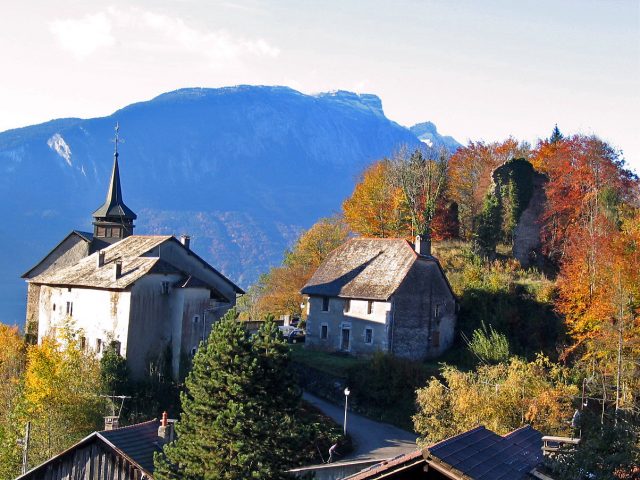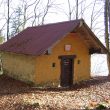The information available and a local search suggest that there is little in the way of documentation to help determine with any certainty the story behind Chatillon church. We are certain, however, that its origins lie in the chapel of the castle.
The wedding benediction of Pierre de Savoie, known as Little Charlemagne, and Agnès de Faucigny was celebrated in 1223. The castellany records of Ameysin indicate that some work was carried out between 1368 and 1371. On the disappearence of the Faucigny dynasty, around 1400, the castle ceased to be a residence and became a fortified prison. The "domestic" chapel, formerly used only by the castle's occupants, could not be used by the people of Châtillon. During a pastoral visit in 1413, Châtillon church was quoted as being annexed to that of Cluses. That was the case until 1606 when, judging from its description, the chapel's orientation was different from that of the church that stands today. Saint François de Sales paid a pastoral visit to Châtillon on Thursday, 10th August 1606. On 11th November that same year, he signed deeds, along with the Reverend Grangerat, the local priest, to separate the churches of Châtillon and Cluses. No longer under the aegis of Cluses, the parish of Châtillon became independent and it was the Reverend Grangerat himself who became the first priest to keep a register of births, marriages and deaths in the parish, from 1608. He died on 27th December 1646. During the 18th century, it became necessary to carry out frequent work on the vicarage and the church. In 1712, the Reverend Douillon called upon the expertise of Riondel who declared that the vicarage had become a real hazard, with cracked walls and a structure and floor on the verge of collapse. He offered to rebuild it on the location of the barn (on the path between the cemetery and the castle), because "the current location is dangerous". No work was carried out until 1720, when the bell tower was restored to accommodate the large bell. It had become urgent to carry out work on the presbytery as the east wall was threatening to fall down. The Reverend Blanc had an estimate drawn up without telling the municipality, who were unhappy about the cost of the work, 460 pounds and 90 sous. That same year, 1739, work that should have been done in 1726, again failed to materialise, leaving the church vault close to a state of ruin... In October 1755, the council informed the intendant of the pitiful state of the roof, the vault and the bell tower which was failing to protect the bells, and asked that work begin before the onset of winter... Reverend Bel was faced with major repair work on the vicarage, church and cemetery. In 1765, the cracked vicarage hearth required work to prevent the risk of fire, as did the church and the flooring between the two buildings. It seems very little work was carried out, judging from an estimate drawn up in August 1766 by Renand de Bonneville which included: 1) Major work at the vicarage (entrance steps, kitchen, bedroom, cellar and roof). 2) Renovation of the church roof, and the installation of an iron bell-tower structure to secure the big bell. For an estimated cost of 532 pounds for the vicarage and 96 pounds for the church, the repairs were carried out by a local firm from Cluses, who considered additional work to be necessary at the vicarage. The work was completed in June 1767. It seems the work planned in 1767 was done with varying degrees of success.Consequently, in 1774, the architect, Renaud, paid another visit to the vicarage and the church and produced another estimate for urgent and essential repairs: *At the church: the vault is cracked as a result of the loosening walls and needs to be rebuilt "in the shape of an Italian priest's hat". To consolidate it, three iron keystones will be needed together with keystone pins to connect all the walls.
Types
- Historic site and monument
Themes
- Religious heritage
- Church
Comforts
Languages spoken
- French
Accessibility
- Not accessible in a wheelchair
Prices
Free of charge.
Opening
All year round, daily.





